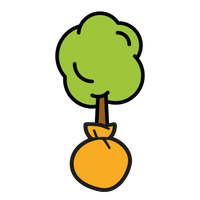When should I plant Beech hedging?
The best time to plant your Beech hedge is during April or May.
How far apart do you plant Beech plants?
You will need to space your Beech plants around 45-60cm apart, but this does depend on the plant size (we recommend at least 3 per metre for smaller plants such as 40/60cm).
How to plant your Beech hedging:
Begin by digging a strip that is 60-90cm wide and one spade deep. Ensure you have removed all weeds - you can use a weed killer to do so.
Spread out the roots nicely and scrape away any excess compost from container-grown plants. With sandy/hardy soils, mix garden compost with the soil dug out from the hole - this will be used to backfill the hole.
Place the hedging into the hole(s), and ensure you work the soil between the roots - placing the soil mix into the remaining space. Press down to secure, and water well if the soil is dry. Ensure they stay well-watered for 2 years (during dry spells).























